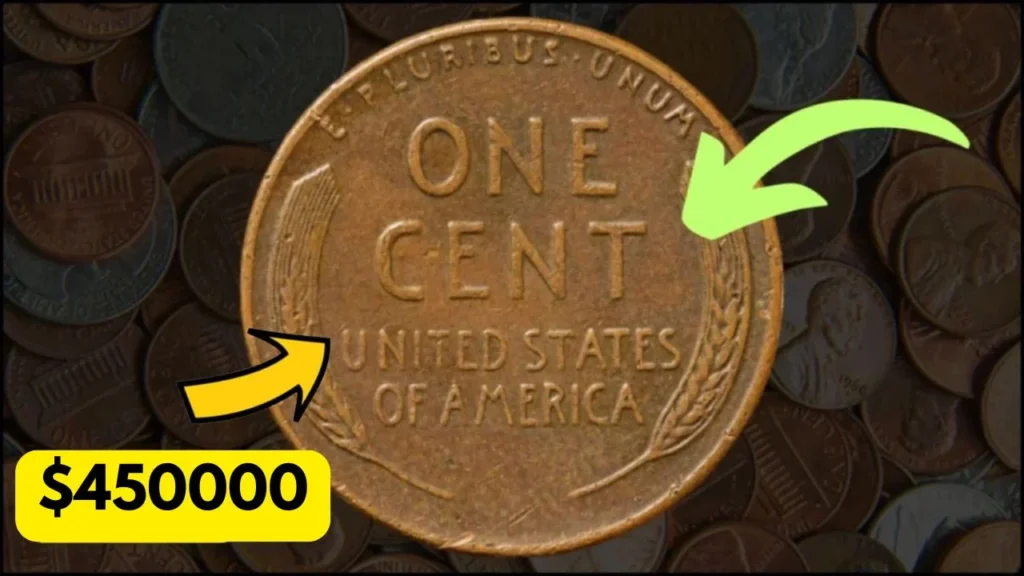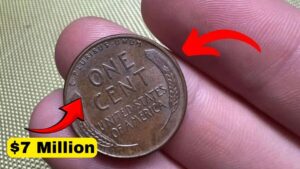Imagine this: you’re digging through loose change in your wallet and stumble upon a humble Lincoln wheat penny—an everyday coin you’ve seen countless times. But this isn’t just any penny. It’s a 1943 bronze wheat penny, one of the rarest error coins in existence—an ounce of copper in a world awash in zinc-coated steel. That mere slip at the mint transformed a cent into a treasure worth more than $840,000 at auction
What Makes This Wheat Penny So Valuable?
During World War II, the U.S. Mint switched from copper to zinc-coated steel for pennies to conserve copper. But in 1943, a small batch of coins—struck on leftover bronze planchets from 1942—escaped and entered circulation. These are the famous 1943 bronze wheat pennies.
- Ultra-rare error: Only about 30–40 examples are known
- Auction record: One Denver-mint example sold for $840,000 in 2021
- Other major sales: A 1943‑S coin fetched over $500,000, and the Philadelphia version hit $372,000
Such coins are revered as the “holy grail” of U.S. numismatics, with collectors worldwide hunting for even the slightest hint of copper.
How to Spot a 1943 Bronze Wheat Penny
1. Copper, Not Steel
Copper pennies are slightly heavier and non-magnetic. A quick test with a fridge magnet can reveal a bronze coin instantly.
2. Mint Mark & Date
Look for pennies dated 1943, especially those marked:
- Denver (“D”) — rarest, only one known
- San Francisco (“S”) — about five or six known
- Philadelphia (no mint mark) — around 20 known
3. Appearance
These coins look like typical Lincoln cents from that year, except in copper color. There’s no doubled date or abnormal features. The key is confirming it’s the wrong metal.
Real-Life Treasure Hunt: Story from the Field
Legend has it that one collector found a 1943 bronze penny in loose change while buying coffee at a diner in 2005. It found its way to a local coin dealer, who examined it under a stereomicroscope, confirmed the planchet error, and had it graded. It later sold for $375,000—enough to buy a modest house in many parts of the U.S.
It’s rare, but possible.
Other High-Value Wheat Penny Varieties
While the 1943 bronze pennies are the most dramatic, other varieties still bring serious money.
1909‑S VDB
- Scarce San Francisco mint, designer Victor David Brenner’s initials (“VDB”) removed shortly after release.
- Some sold for over $360,000
1955 Double Die
- Caused by a misalignment during minting.
- 20,000–24,000 circulated; pristine examples sell for tens of thousands
Other key dates
- 1958 DDO fetched $336,000 at auction
- The 1944-S steel cent, a rare off-metal error, has sold for over $373,000 .
H2: Expert Tips for Authentication & Value
H3: 1. Use a Magnet Test
Any non-magnetic penny dated 1943 should raise eyebrows. Steel pennies stick to magnets; bronze pennies don’t.
H3: 2. Professional Grading
Top-tier agencies like PCGS and NGC provide legitimacy and typically fetch higher prices
H3: 3. Consult a Numismatist
Fake or plated coins are common. Before buying or selling, get a trusted expert’s eyes on the coin.
H3: 4. Documentation Matters
Coins with certified provenance and auction history sell for considerably more. Even a photo from a 1943 coin in someone’s collection adds credibility.
H2: Still in Circulation? How to Keep an Eye Out
Yes—you can still find valuable wheat pennies in everyday change.
- Coins remain in circulation for ~30–40 years
- Keep pennies in a separate jar for periodic inspection.
- Handle with gloves and soft tweezers to preserve condition.
Real-life case: A janitor once found a 1955 DDO in a leftover bag of pre-1985 pennies—worth over $50,000 after grading.
The Science Behind the Rarity
Wartime Metal Shift
Copper was vital for war efforts, so the Mint switched to steel. The rare mistakes occurred when old bronze planchets remained in feed—producing the infamous 1943 bronze cents
Brief Initial Experiment
The original VDB initials were removed to avoid controversy; only a small run reached circulation
Die Error
Misaligned dies—like those in 1955 and 1958—produced double‑dated or doubled text coins. Most were noticed and removed, but a few slipped through.
H2: FAQs – Quick Reference
| Question | Answer |
|---|---|
| Can I find a valuable wheat penny? | Yes, if you save older pennies and watch for weight/material, mint marks, and doubling. |
| What’s the most valuable one ever sold? | A 1943‑D bronze penny sold for $840,000 in 2021 |
| What’s a “DDO”? | Double Die Obverse, where text/dates appear doubled. Key for 1955 and 1958 wheat pennies. |
| How can I verify authenticity? | Use non-magnetic tests, grading services, and expert numismatists. |
Featured Snippet Formula
To identify a 1943 bronze wheat penny worth over $450,000, first check if the penny is dated “1943” and non-magnetic; next confirm mint mark (“D,” “S,” or no mint mark), then have it professionally graded by NGC/PCGS. These error pennies, struck on leftover bronze planchets during WWII, are estimated at 30–40 examples and regularly fetch $300,000–$840,000 at auction.
Final Take – A Lucky Chance in Your Pocket
The thought that something as ordinary as a wheat penny—minted during Lincoln’s symbolic era, cluttering our pockets for generations—could be worth hundreds of thousands of dollars is magical. It’s numismatic proof that history, error, and hope combine in the least expected places.
So next time you pay with pennies, pause. Sort your older ones and check for weight, metal, and mint marks. A tiny coin might just unlock a six-figure surprise—and a story worth telling.
Stay curious. Stay hopeful. And good luck with your pocket treasure hunt!


